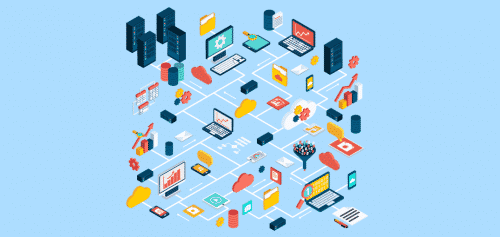The end user computing landscape has undergone massive shifts as the way employees prefer to work has dramatically changed over the past decade. Consider the not-so-distant days of when all employees came into a physical office location daily and logged into a stationary, company-issued computer that was connected to a secure corporate network. Things look very different today.
Employees want to use a variety of devices and OS platforms, from almost anywhere, at any time, and to access all their apps, files, and data. Allowing them to do so has benefits for both employees and employers. Research confirms that providing employees with work style flexibility and a positive digital experience is linked to achieving key business outcomes such as competitive position, company growth and employee sentiment.
While proven to benefit both employees and the organizations for which they work, this shift presents a challenge for IT as they must enable broader access than ever before while maintaining the level of control that internal policies require. IT organizations often find themselves in a reactive position and run toward one of these pitfalls:
- Revert back to blanket, binary security policies that impede on employee experience (e.g., deny access, password overload)
- Bolt on more security tools, which leads to more complexity.
Ironically, these kneejerk reactions meant to further secure an organization end up putting it at greater risk.
A new approach is required – one that shifts the mindset away from detecting threats by using more tools, that send more alerts, that burn out IT and InfoSec teams. This new approach needs to start with intrinsic security and leverage intelligence, from all sources, to secure users from apps to endpoints to infrastructure.
With a destination in mind, let’s consider steps IT teams can take to secure the digital workspace.
Step 1: Manage ‘Product-Sprawl’ with an Open Platform Approach
Security threats are increasing both in frequency and cost, as well as focus and sophistication. The CISO’s job has never been more taxing, and the stakes never higher. All too often IT leaders try to address security vulnerabilities by reaching into their pockets, bolting on product after product. In fact, cybersecurity teams use an average of over 80 different security products from 40 different vendors.
More security products must mean a more secure organization, right? Not necessarily. Legacy, stand-alone security tools provide limited visibility for IT and lead to the creation of solution silos across the environment. This ‘product-sprawl’ results in an uncoordinated threat detection and remediation approach that negatively impacts organizations, raising costs due to complexity and the manual tasks associated with trying to secure a digital workspace.
Instead of deploying solutions in silos, organizations would be well served to adopt an open platform approach to connect various solutions for improved visibility across the environment. The ideal framework takes advantage of APIs built on a proven digital workspace platform. This is because APIs enable a rich ecosystem of security solutions to communicate with the platform, and ultimately provide the aggregated view administrators want and need to simplify security and management.
A robust digital workspace strategy will include an open ecosystem of trusted security solutions that specialize in thwarting attacks and mitigating risk in areas such as device health assessment, policy setting, patching, compliance monitoring, and more.
Step 2: Detect with Intelligence
With security solutions connected via a single digital workspace platform, threat detection becomes a much simpler task. Combining access, device and application management via an open platform is just part of the digital workspace security equation. This must be paired with analytics, leveraging a framework of trust across the entire ecosystem and using insights from collected data to make the right security decisions.
Prepared enterprises can detect threats using continuous and adaptive monitoring, enabling their IT operations and security teams to find threats on mobile and desktop endpoints and applications. With automated, continuous monitoring and alerting of who is accessing what information, from where, and how, across what networks – IT stays in control. Then, using last-known good state, logging and intelligence in the form of analytics, IT has the tools in place to recognize what is different and use that insight to make better decisions about what to do next.
Leveraging insights from cloud, threat, user and entity intelligence helps IT become more agile when maintaining baseline configurations and hygiene, decreasing the time IT spends on responding to suspected incidents.
Step 3: Remediate with Automation
An internal VMware study indicated that one-in-ten enterprise customers takes a year or more to complete Windows patches that affect most or all of their endpoints. This gives attackers time to invent exploitation methods, putting the organization at great risk.
IT teams must be able to leverage insights from their environment to confidently pre-define policies, based on root causes, to quickly automate response and recovery for best results. Through automation, IT may choose to quarantine, suspend, or block access to an application or cloud service. After threats are detected, the most prepared enterprises have an effective solution to automate remediation through an engine that can detect behavioral anomalies and initiate an automated policy to block access to sensitive data.
Collapse security solution and team silos with an open digital workspace platform. Leverage analytics to proactively detect threats. Automate remediation to speed reaction time and lighten IT’s growing backlog. These are the key ingredients to a winning digital workspace security recipe. When IT teams embrace this modern approach to securing their digital workspace environment, they can more confidently empower employees to be more productive and efficient, benefiting both employees and employers.

